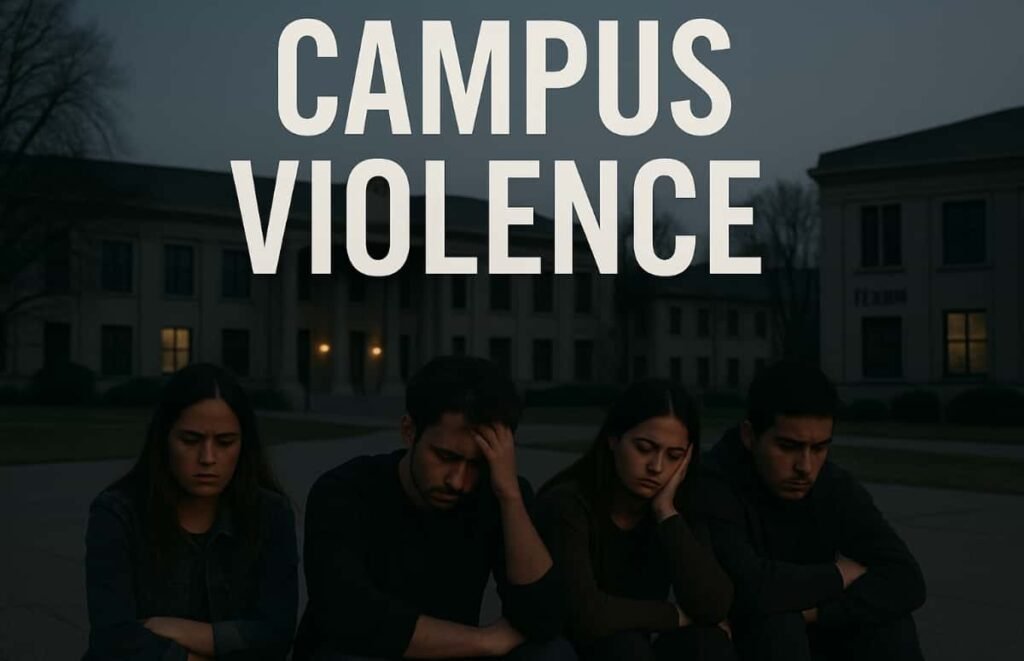Campus Violence Paragraph in English – Best for SSC & HSC Exams

Campus Violence Paragraph: 200 Words
Campus violence is a growing concern in many educational institutions around the world. It refers to any form of aggressive or harmful behavior that takes place within a school, college, or university campus. This violence can be physical, emotional, or even verbal, often resulting from political rivalry, personal conflicts, or group clashes. In recent years, the number of incidents involving campus violence has increased, raising serious concerns among students, parents, and authorities.
One of the major causes of campus violence is political involvement in educational institutions. Many student organizations are directly affiliated with political parties, which creates divisions and rivalries. These rivalries often lead to violent clashes during elections or protests. Another contributing factor is the lack of strict rules and security measures on campus. When students feel there are no consequences, they may act out aggressively.
The effects of campus violence are deeply damaging. It creates an unsafe environment for learning and development. Many students become fearful of attending classes or participating in campus activities. Academic performance suffers, and the reputation of the institution declines.
To prevent campus violence, authorities must enforce strict policies and ensure proper monitoring of student activities. Counseling services should be available to address mental health and anger management. Parents and teachers must work together to educate students about tolerance, discipline, and the value of peaceful coexistence.
In conclusion, campus violence is a serious issue that demands immediate action. Without a safe educational environment, the future of students remains at risk. It is our collective responsibility to create campuses that promote harmony, respect, and learning.
Campus Violence Paragraph: 400 Words
Campus violence has become one of the most alarming issues in educational institutions across the globe. It is not just a disruption to academic progress but a threat to the overall mental and physical well-being of students, teachers, and staff. The term “campus violence” refers to a wide range of violent activities that occur within the premises of schools, colleges, or universities. These acts may include physical assaults, fights, verbal abuse, bullying, vandalism, and even more serious incidents involving weapons or gang rivalry.
There are several underlying causes behind the rise in campus violence. Political influence plays a significant role, especially in countries where student organizations are aligned with national parties. Political groups often use students as tools, creating an environment of hostility and division. Furthermore, unresolved personal conflicts, peer pressure, drug abuse, and the lack of proper mental health support also contribute to such aggressive behaviors. Social media and digital platforms sometimes spread rumors or provoke confrontations, escalating situations beyond control.
The consequences of campus violence are far-reaching. First and foremost, it creates fear among students. They lose the freedom to move around safely or focus on their studies. Educational institutions that face repeated violence often see a drop in enrollment and suffer from a damaged reputation. Teachers and administrative staff also feel unsafe and demotivated, which disrupts the academic process. Moreover, victims of campus violence may suffer from long-term trauma, anxiety, or depression.
Tackling campus violence requires a multi-layered approach. Firstly, educational institutions must implement zero-tolerance policies toward violence of any kind. CCTV surveillance, campus security, and strict monitoring of student organizations are necessary steps. Secondly, conflict resolution workshops, awareness campaigns, and open communication between students and faculty can help reduce tension. Mental health counseling and anonymous complaint systems should be made easily accessible to all students.
Another important step is minimizing political interference in student affairs. Students should be encouraged to focus on education, creativity, leadership, and community service rather than political battles. Parents also need to remain actively involved in their children’s academic and emotional development.
In today’s competitive world, a peaceful learning environment is essential for building capable and responsible citizens. When campus violence goes unchecked, it not only destroys careers but also weakens the nation’s foundation. Everyone – students, teachers, parents, and authorities must come together to eradicate this menace and restore harmony in educational institutions.
In conclusion, it is a pressing issue that cannot be ignored. Educational institutions must be places of safety, creativity, and personal growth. With combined efforts, we can eliminate violence from campuses and ensure a brighter future for the next generation.
FAQ
A: Campus violence refers to aggressive, harmful, or disruptive behaviors that occur within school, college, or university premises. It includes physical fights, bullying, verbal abuse, political clashes, and more.
A: The main causes include political interference, lack of discipline, poor mental health support, peer pressure, and absence of strict campus policies.
A: Campus violence creates fear, hampers academic performance, causes mental trauma, and reduces the overall quality of education.